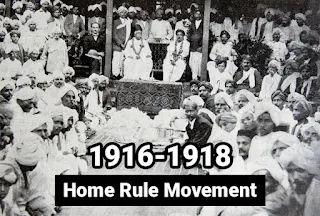The Home Rule Movement (1916-1918): Striving for Autonomy within the British Empire
Introduction
In the early 20th century, India was under British colonial rule, and the desire for self-governance and autonomy was growing among the Indian population. One of the significant movements that emerged during this time was the Home Rule Movement. Led by prominent leaders Annie Besant and Bal Gangadhar Tilak, this movement aimed to secure autonomy for India within the British Empire. This article will delve into the initiation of the Home Rule Movement, its objectives and methods, as well as the obstacles faced by the movement.
A. Initiation of the Home Rule Movement
The Home Rule Movement was initiated by two influential figures, Annie Besant and Bal Gangadhar Tilak. Annie Besant, a British social reformer and women's rights activist, arrived in India in 1893 and became deeply involved in the Indian independence movement. Bal Gangadhar Tilak, on the other hand, was a prominent Indian nationalist and social reformer who played a crucial role in mobilizing the masses for the cause of Indian independence.
Together, Besant and Tilak saw the need for a united movement that could effectively advocate for self-governance within the British Empire. They believed that India should have the right to govern itself and make decisions that would benefit its people. With this vision in mind, they launched the Home Rule Movement in 1916.
B. Objectives and Methods of the Movement
The Home Rule Movement had several objectives. First and foremost, it aimed to secure autonomy for India within the framework of the British Empire. The movement sought to establish a system of self-governance that would allow Indians to make decisions regarding their own affairs, such as education, healthcare, and economic policies.
To achieve their objectives, the leaders of the Home Rule Movement employed various methods. One of the key strategies was the establishment of provisional governments at the regional level. These governments acted as symbols of Indian self-rule and provided a platform for the Indian leaders to voice their demands for autonomy.
Additionally, the movement focused on mass mobilization and raising awareness among the Indian population about the importance of self-governance. Public meetings, rallies, and protests were organized to garner support and create a sense of unity among the people. The leaders of the movement used eloquent speeches and persuasive arguments to convey their message effectively.
C. Obstacles Faced by the Movement
Despite its noble objectives and dedicated leadership, the Home Rule Movement faced several obstacles along its path to autonomy. One of the significant challenges was the opposition from conservative Indian leaders. These leaders believed in a more gradual approach to independence and were wary of the radical methods employed by the Home Rule Movement. They feared that such actions could lead to a backlash from the British authorities and jeopardize the overall goal of independence.
Furthermore, the British authorities were quick to crackdown on the Home Rule Movement. They viewed the movement as a threat to their colonial rule and took measures to suppress its activities. The leaders of the movement faced arrests, imprisonment, and even censorship of their speeches and writings. These repressive actions made it difficult for the movement to gain momentum and achieve its objectives.
FAQ
Q1: Who were the key leaders of the Home Rule Movement?
A1: The Home Rule Movement was led by Annie Besant and Bal Gangadhar Tilak.
Q2: What were the objectives of the Home Rule Movement?
A2: The Home Rule Movement aimed to secure autonomy for India within the British Empire and establish a system of self-governance.
Q3: How did the Home Rule Movement mobilize the masses?
A3: The movement organized public meetings, rallies, and protests to raise awareness and garner support for self-governance.
Q4: What were the obstacles faced bythe Home Rule Movement?
A4: The movement faced opposition from conservative Indian leaders and crackdowns from the British authorities.
Q5: Did the Home Rule Movement achieve its objectives?
A5: While the Home Rule Movement did not achieve complete autonomy for India, it played a significant role in raising awareness and laying the foundation for future independence movements.
Conclusion
The Home Rule Movement of 1916-1918 was a crucial chapter in India's struggle for independence. Led by Annie Besant and Bal Gangadhar Tilak, the movement aimed to secure autonomy for India within the British Empire. Despite facing obstacles such as opposition from conservative Indian leaders and British crackdowns, the movement succeeded in raising awareness and mobilizing the masses for the cause of self-governance. The Home Rule Movement laid the foundation for future independence movements and played a significant role in India's journey towards freedom.


Comments